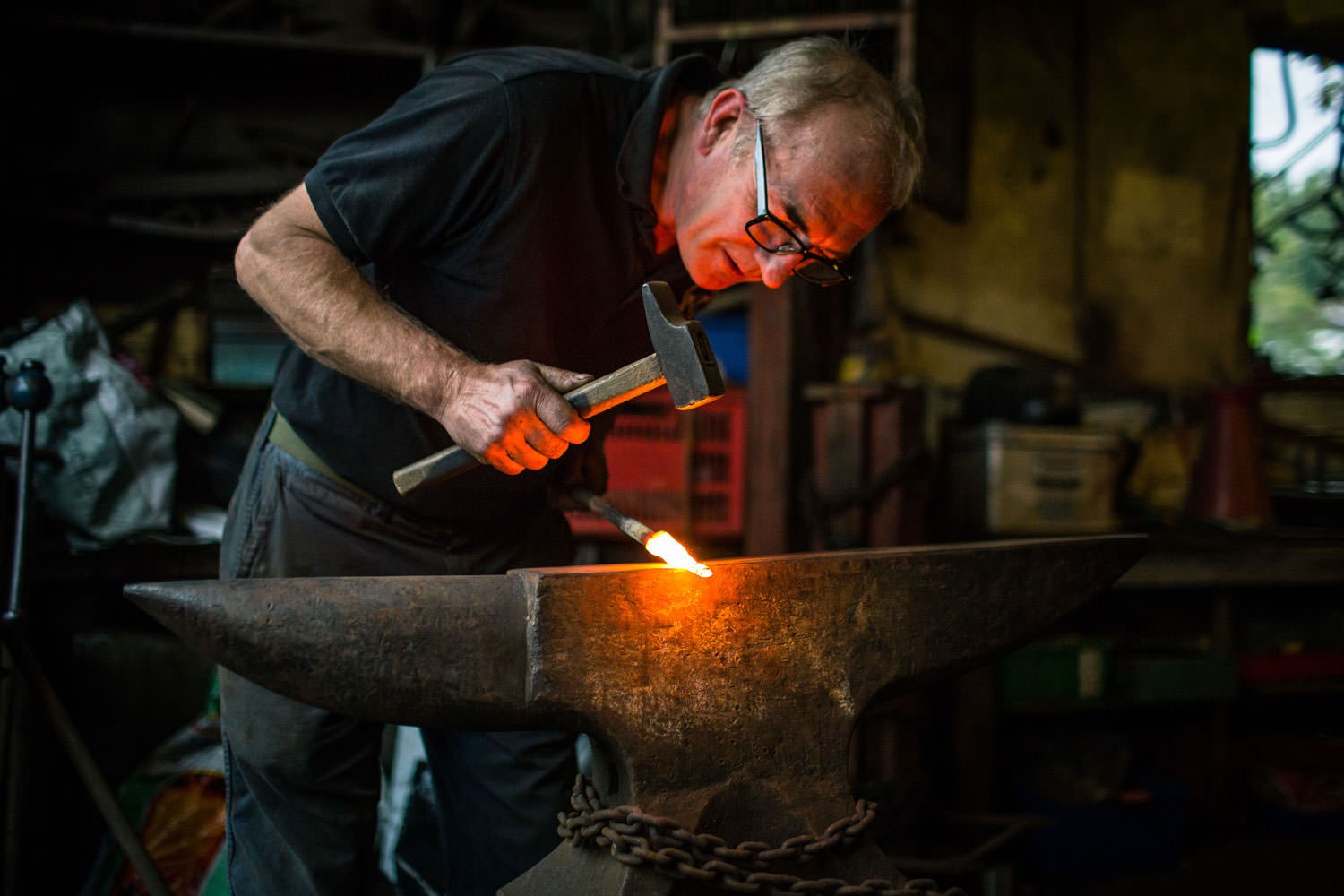From the creation of some of the earliest tools to the crafting of train engines, blacksmithing has played a central role in human progress. Tucked away behind Canary Wharf’s imposing towers, master blacksmith Kevin Boys is helping a new generation rediscover this ancient art
— 7.30 am: Starting early
I like to get to the studio early, but that’s what having a small business is like: it’s about the hours you put in. A lot of owners of small businesses want to be in big businesses. I’ve had chances over the years to expand, but I’m not interested. I want to be on the shop floor practising my craft. It’s all about the control of the material for me. I studied an MA in fine art sculpture, so it lets me bring art and blacksmithing together.

Master blacksmith Kevin Boys finds satisfaction in an ancient craft that blends artistry and mathematics
— 8.00 am: Preparing the space
I tidy up the studio and check for any hazards. Blacksmithing holds a lot of risk – the fire can get up to 1,900C degrees and some of the machines hammer steel at 150 blows per minute. Then I gather the materials for the day. We hardly ever need to buy anything new – people bring us all sorts of stuff that we can repurpose.

— 9.00 am: Planning the day
Once we are all in, we consider what jobs we have and where people should focus for the day, then we get the fire on. I get two or three new apprentices every couple of years. They work towards their qualification and get the experience needed to set up their own businesses. There are only three smiths in London now but there used to be one every mile or so of the river. The industrial revolution and the invention of electricity changed everything. I don’t think it will ever die out though.

Apprentice Steve Lock is learning first-hand the intricacies of the practice, under Boys’ watchful eye
— 10.00 am: Careful instruction
If the apprentices are working on pieces they’ll be examined on, I stay with them all the time, making sure their technique is right. Smithing is all about attention to detail and it needs a lot of practice. You have to love it. There is definitely a lot of luck involved in making it as a blacksmith, but people need drawing skills and mathematics as well, and to really apply themselves.

— 12.00 pm: Crafting stories
I’m working on a maquette [small scale model] for a replica I’m hoping to make of the historic Rotherhithe Scotch Derrick crane. It’s the last example of this type of crane in London and is indigenous to the River Thames. It’s on land sold to developers and residents are upset about losing it. If we can create a model for the site, we could preserve the heritage, but allow developers to use the space. I prefer to work on pieces that have some meaning or stories behind them, rather than art for art’s sake.

I prefer to work on pieces that have some meaning or stories behind them, rather than art for art’s sake
— 2.00 pm: Passion projects
I work on my own stuff whenever I can squeeze it in. Because I’m often doing it in snatches, it can take a couple of years to complete something. I’m finishing a unicorn sculpture at the moment. I try not to get too attached to things, but when you have worked on something for years, it can feel like giving away your first child when it is sold. But this is a business, I have a mortgage and a family to feed, so I never turn down a sale.

— 4.00 pm: Sharing the art
I run workshops for the public at weekends. Mostly I work with small groups, but also with individuals or couples who want to make something special for a particular occasion. Smithing is quite addictive. Some people are happy to keep it as a hobby, but others get hooked. It has all the drama of a Hollywood blockbuster? – hot fire and real danger, but that makes it more exciting. I still burn myself occasionally, but a lot worse things could happen.

The burning heat of a fire that can reach 1,900C degrees, and powerful machinery makes blacksmithing an exciting trade
— 6.00 pm: A family tradition
My grandfather and his brother were blacksmiths, so I’ve kept the tradition alive. That’s been my mission, I suppose. But they both died when I was around 19 so they never saw me make it as a blacksmith. I’m not concerned about either of my boys carrying it on, though my youngest, Finley [19], might. It’s my passion – I understand they have other interests. I don’t think I’ll retire. I’ll just scale my jobs down. I’ve done big tonnage pieces over the years, and I’m happy with that.

Images: Alexander Walker
An empowering gift
Positive News stories show how people’s actions make a difference. Give someone an empowering lens on the world, with a Positive News gift subscription.